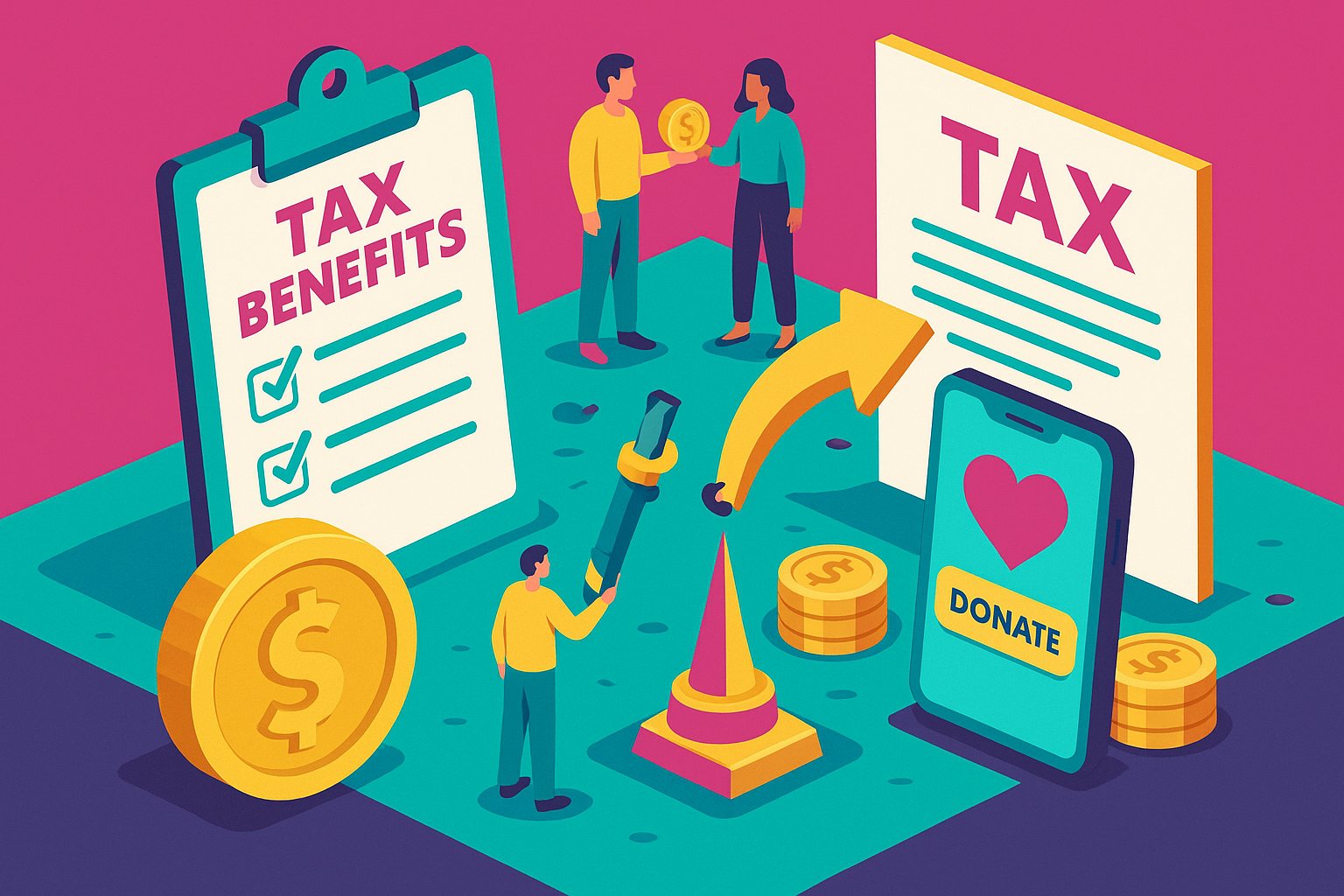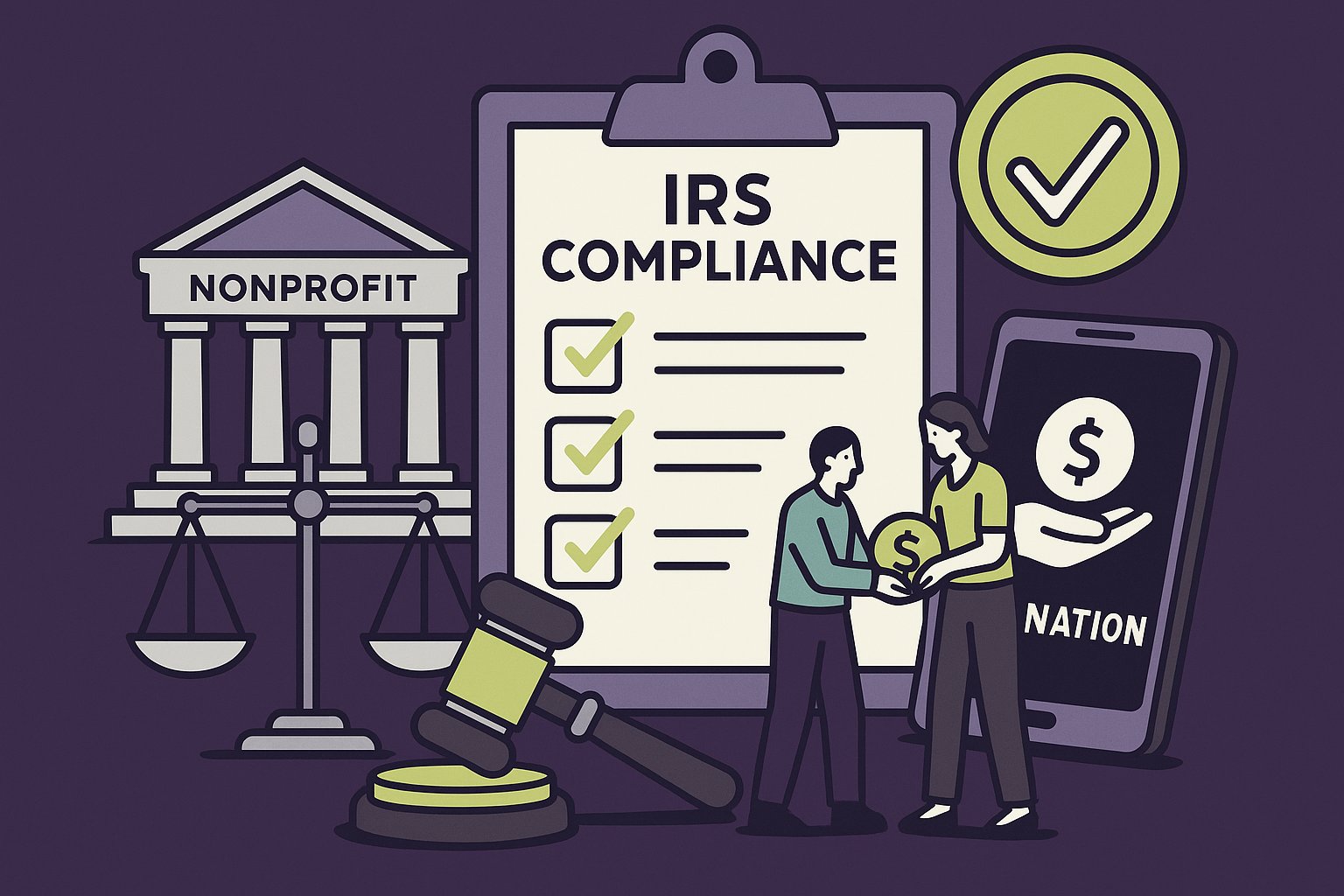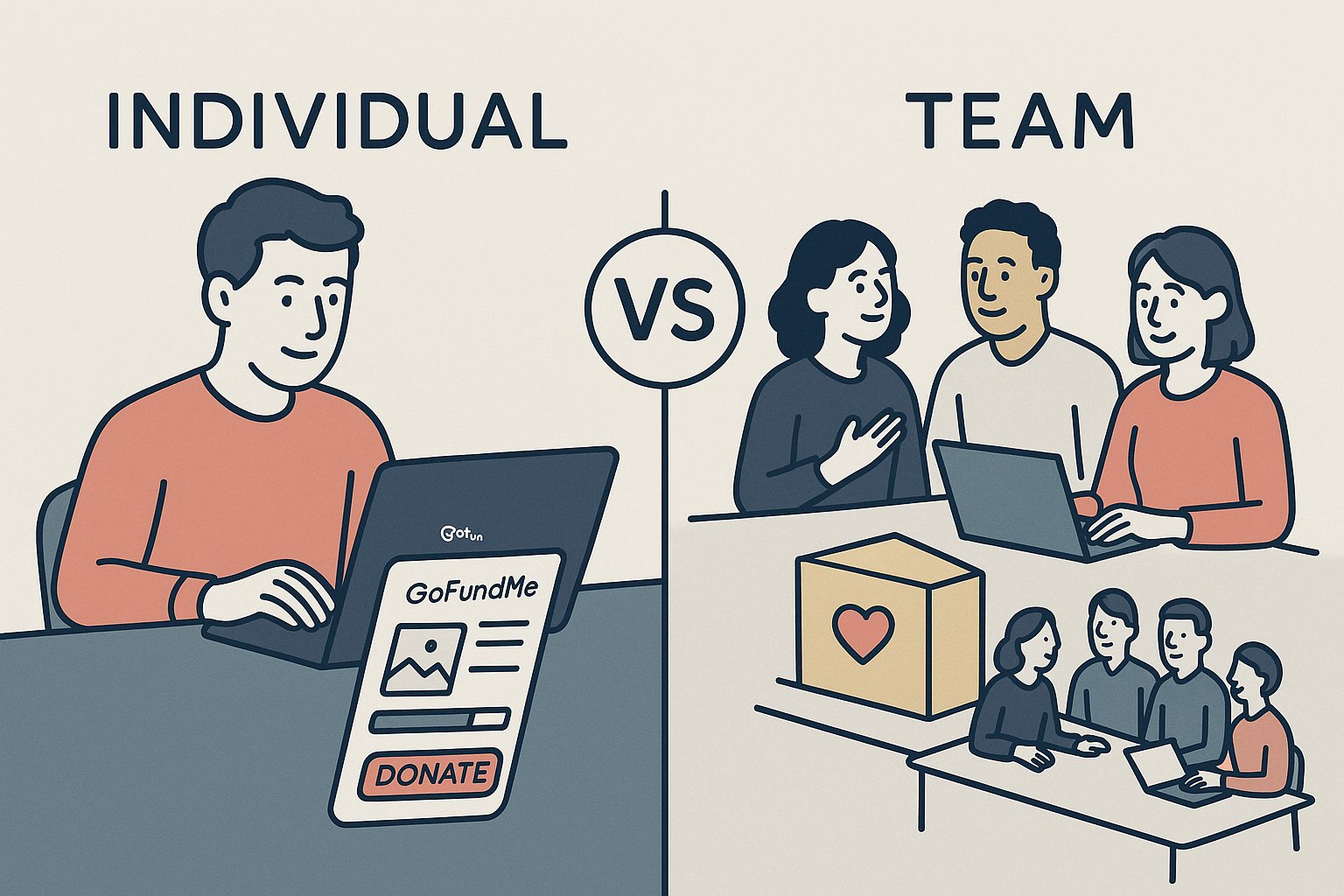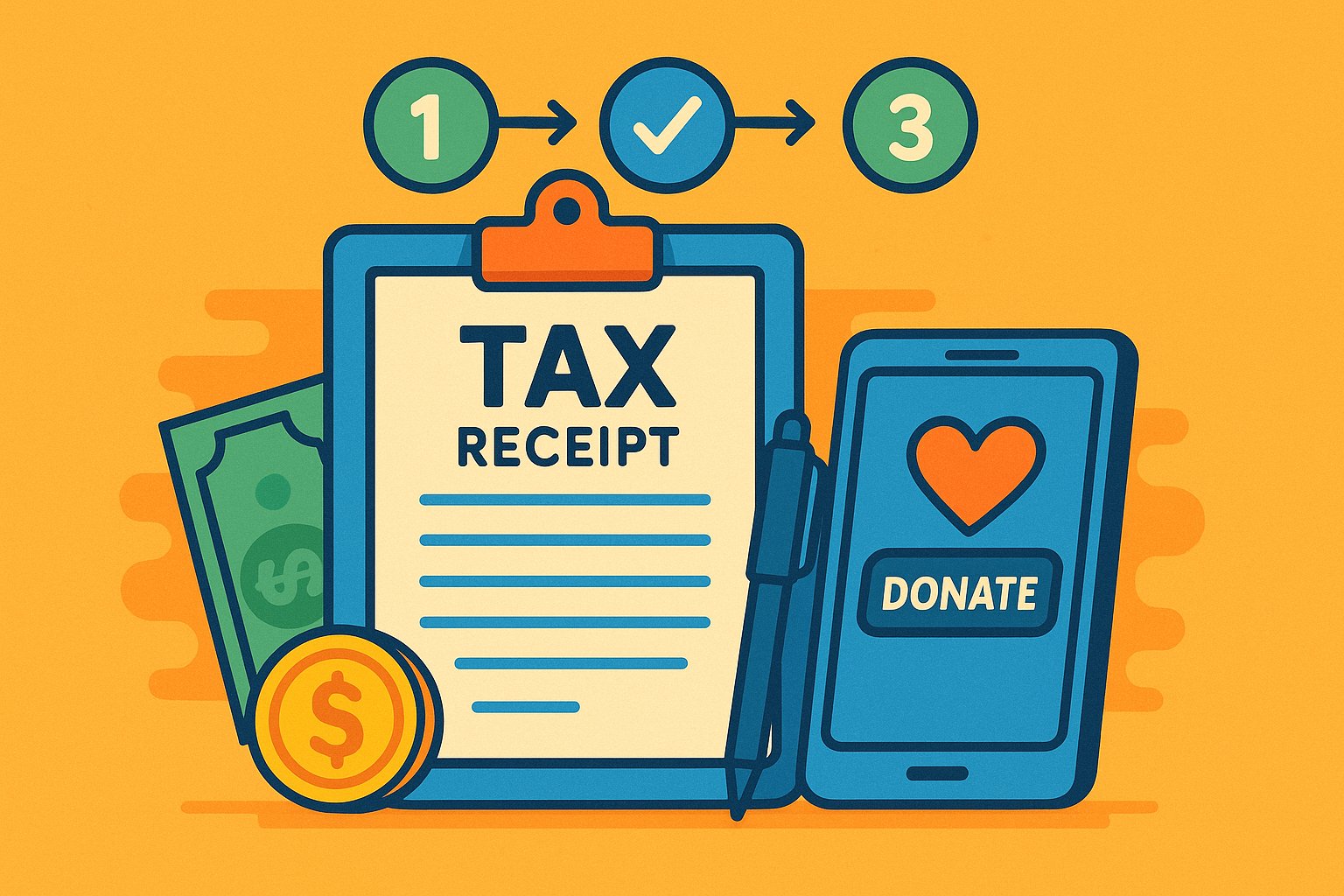Unveiling the Power of Tax-Smart Crowdfunding
Imagine contributing to a cause you care deeply about and simultaneously optimizing your financial standing. Donation crowdfunding, when structured effectively, offers this dual reward—emotional fulfillment from advancing a mission and significant tax benefits that amplify your giving. By navigating the intricate rules governing charitable contributions, donors can stretch their gifts further, enabling nonprofits to scale impact. This comprehensive guide explores how to leverage crowdfunding for maximum tax advantage, ensuring every dollar you give transforms into measurable change and delivers the greatest possible tax savings. Whether you’re a seasoned philanthropist or a first-time donor, mastering these strategies will elevate your generosity and deepen the impact of your contributions.
Decoding Deductible Donations in Crowdfunding
Not all crowdfunding contributions qualify for a tax deduction. The first critical step is confirming whether the recipient is a recognized 501(c)(3) nonprofit—or its equivalent under local regulations. Platforms host campaigns for individuals, small businesses, and charitable organizations, but only donations made to certified nonprofits are eligible for tax deductions. Before clicking “donate,” verify the campaign organizer’s tax-exempt status, typically indicated by an IRS-approved EIN displayed on the crowdfunding page. Once confirmed, any donation made through a compliant platform—absent substantial quid pro quo benefits—can generally be deducted on federal tax filings. Distinguishing eligible campaigns from personal or for-profit fundraisers ensures your contributions yield the intended tax advantages.
Choosing the Right Platform for Tax-Eligible Giving
Selecting a crowdfunding platform designed specifically for charitable causes is paramount to maintaining deductibility. Platforms like GoFundMe Charity, Donorbox, and GlobalGiving integrate directly with 501(c)(3) organizations and automatically generate tax-compliant receipts. These sites handle payment processing transparently—deducting minimal fees after funds are collected—so donors know the precise amount they can claim. Conversely, general crowdfunding sites often lack mechanisms for issuing tax receipts, risking the loss of deduction eligibility. By choosing a platform explicitly tailored for nonprofits, you not only facilitate seamless giving but also enable donors to claim the full benefits of their tax-deductible gifts without additional administrative hurdles.
Strategic Donation Structuring for Maximum Tax Relief
How and when you give can profoundly affect your tax outcome. Donors who itemize deductions on Schedule A of Form 1040 can generally deduct cash gifts to public charities up to 60 percent of their adjusted gross income (AGI). To maximize tax efficiency, consider “bunching” gifts—combining two years’ worth of contributions into a single tax year—thereby surpassing the standard deduction threshold and capturing greater itemized savings. For donors planning large annual gifts, structuring them as monthly installments through crowdfunding platforms can spread deductions across several tax periods. Additionally, contributing appreciated assets such as stock or cryptocurrency—assuming the crowdfunding campaign can accept non-cash gifts—allows donors to avoid capital gains tax while deducting the asset’s fair market value. Thoughtful timing and asset selection can significantly increase net philanthropic impact.
Nonprofit Best Practices for Accurate Donor Receipts
Accurate documentation is the backbone of tax-deductible giving. Every nonprofit must issue an acknowledgement—or “tax receipt”—that adheres to IRS requirements. A compliant receipt must display the organization’s name, EIN, donor’s name, donation date, and amount. It must also include a statement confirming no goods or services were provided in exchange for the gift, or disclose the fair market value of any benefits received. Digital platforms often automate this process, generating and emailing receipts immediately upon donation. However, nonprofits must verify these systems capture donor details correctly and deliver receipts on time. For recurring donations, sending an annual summary consolidating all gifts helps donors streamline their tax documentation. Meticulous record-keeping and prompt acknowledgments instill donor confidence and safeguard the nonprofit’s tax-exempt status.
Informing Supporters About Deduction Rules
Many donors are unfamiliar with the intricacies of charitable deduction rules. To empower contributors and encourage generosity, nonprofits should provide clear educational resources. A concise “Tax Information” section on the crowdfunding page can explain that deductions apply only to contributions made to a qualified 501(c)(3) organization, accompanied by a link to IRS Publication 526. Clarify lower deduction limits for non-cash gifts—such as vehicles or in-kind donations—and outline the five-year carryforward option for any contributions exceeding AGI limits. By embedding this guidance within your campaign narrative, you help supporters make informed giving decisions. Educated donors feel assured that their contributions are optimized for maximum tax benefit, reinforcing trust and driving higher participation rates.
Maximizing Year-End Campaigns for Tax Benefits
The final months of the year traditionally see a surge in charitable giving as donors seek year-end tax deductions. Nonprofits can capitalize on this by launching strategic crowdfunding drives between October and December. Clearly communicate that donations made by December 31 qualify for that year’s tax deduction, and consider securing a matching gift challenge to amplify urgency. Embed a countdown timer on your campaign page, signaling how much time remains to give and benefit from immediate tax savings. Use targeted email sequences—reminding supporters of upcoming holidays, tax deadlines, and campaign milestones—to maintain momentum. By focusing on year-end giving, nonprofits can harness both the philanthropic spirit of the season and donors’ tax planning strategies, resulting in substantial fundraising boosts.
Integrating DAFs into Your Crowdfunding Strategy
Donor-advised funds (DAFs) have emerged as a preferred vehicle for many philanthropists, offering immediate tax deductions with the flexibility to recommend grants at a later date. Nonprofits can tap into this trend by providing clear instructions for DAF-based contributions. Within your crowdfunding campaign narrative, include a section titled “Support Us Through Your DAF,” listing essential information—nonprofit name, EIN, and a suggested grant memo referencing the campaign title. Don’t overlook the opportunity to educate new DAF holders by offering a downloadable one-page guide explaining the process. When a DAF grant arrives in your organization’s account, treat it as a regular gift—issue a tax receipt to the donor-advisor and attribute it to the specified crowdfunding campaign. By streamlining the DAF giving process, nonprofits unlock larger, often pre-funded gifts and deepen relationships with high-net-worth donors.
Managing Cross-Border and State Tax Considerations
Crowdfunding campaigns often garner support beyond state lines, sometimes even internationally. Each jurisdiction has its own rules governing charitable deductions. For U.S. donors, contributions to IRS-recognized nonprofits generally qualify for federal tax deductions regardless of donor residency, though state-level rules may impose caps or additional requirements. Conversely, international donors must navigate local regulations that differ significantly; a Canadian supporter, for example, needs a registered Canadian entity or fiscal sponsor—such as CanadaHelps—to issue an official receipt recognized by the Canada Revenue Agency. To accommodate diverse audiences, nonprofits should include a “Global Donor Guidelines” section, detailing U.S. federal rules, state-specific notes, and links to international giving resources. By proactively addressing these variances, you minimize donor confusion and ensure everyone understands how to claim deductions in their respective jurisdictions.
Ensuring Campaigns Mirror Your Nonprofit’s Vision
Successful crowdfunding transcends short-term fixes; it aligns with an organization’s broader mission and strategic plan. When designing a campaign, anchor your narrative in the nonprofit’s long-term vision—whether expanding educational programs, protecting fragile ecosystems, or providing critical health services. Clearly articulate how crowdfunding dollars fit into this larger tapestry: “This campaign will fund the first phase of our new community classroom, laying the groundwork for a fully operational learning center by next year.” By demonstrating that each contribution accelerates strategic progress, donors connect emotionally to your mission and comprehend how their tax-deductible gifts deliver sustained change. Integrating crowdfunding within your organizational roadmap fosters continuity, ensuring that each fundraising initiative builds toward lasting impact.
Strengthening Donor Relationships Through Impact Updates
Donors appreciate transparency and tangible evidence that their tax-deductible contributions are making a difference. After the crowdfunding campaign concludes, maintain momentum by delivering periodic updates—quarterly newsletters, video messages from beneficiaries, or photo essays depicting program milestones. Use data visuals: graphs showing how donations are allocated across operational categories, maps highlighting new service areas, or infographics tracking progress against fundraising goals. For large donors or recurring givers, consider personalized phone calls or handwritten notes from program staff, emphasizing the specific impact of their contributions. By continuously demonstrating how philanthropic dollars translate into real-world outcomes, you reinforce donor confidence, nurture loyalty, and prime supporters for future crowdfunding campaigns.
Boosting Campaigns with Corporate Matching Gifts
Engaging employers in matching gift programs multiplies donor impact and maneuvers funds more efficiently. To integrate matching gifts into your crowdfunding strategy, prominently feature a “Matching Gifts” banner on your campaign page with a link to a corporate matching lookup tool. Clearly outline the process: donors can search their employer in the tool, submit a matching gift request form, and have their contribution matched dollar-for-dollar. For corporate-sponsored crowdfunding initiatives—where companies rally employees around a specific nonprofit goal—publicize the match ratio and cap early and often. Host virtual “Matching Gift Tuesdays,” sending automated email reminders that emphasize the doubling effect and include real-time progress bars on social media. By leveraging corporate philanthropy, nonprofits unlock substantial additional resources while offering donors the psychological incentive of maximizing their tax-deductible contributions.
Building Monthly Giving Programs for Ongoing Benefits
Recurring donations offer donors continual tax advantages and nonprofits reliable cash flow. Encouraging supporters to switch from one-time to monthly contributions enhances sustainability. Within your campaign, embed a “Make this a Monthly Gift” toggle, highlighting that smaller, regular gifts can cumulatively produce significant impact and consistent tax deductions. Provide an example: “A $25 monthly gift equates to $300 in your annual tax-deductible giving.” Offer tailored year-end giving summaries that consolidate monthly contributions, making tax filings more effortless. To reinforce this habit, send personalized anniversary messages—celebrating donors’ one-year or two-year milestones—with an enclosed impact report. By championing monthly giving, nonprofits create a stable donor base that benefits from year-round tax deductions and moves beyond episodic giving to sustained partnership.
Delivering Clear Annual Donation Reports
As tax season approaches, donors anticipate comprehensive giving summaries that reflect their philanthropic investments. Nonprofits should prepare polished, easy-to-read reports that list each crowdfunding contribution—date, amount, and designation—and aggregate total donations. Include the organization’s EIN, a statement confirming that no goods or services were exchanged, and a heartfelt thank-you message. For recurring donors, provide a consolidated total with a notation like “This amount reflects your monthly contributions for the 2023 calendar year.” Offering these reports as downloadable PDFs through a donor portal or emailing them directly in late January simplifies tax preparation. When donors receive timely, transparent documentation, they feel empowered to claim the fullest deduction, strengthening their trust in your nonprofit’s stewardship and simplifying year-end giving decisions.
Ethical Use of Donor Perks Without Jeopardizing Deductions
Incentivizing donations—through t-shirts, event tickets, or exclusive events—can entice greater support, but nonprofits must ensure these perks do not compromise tax deductions. IRS regulations require any tangible benefit above the “de minimis” threshold—typically $75—to be disclosed on the receipt with its fair market value subtracted from the total gift. To navigate this, design incentive programs where the benefit remains below the limit or explicitly detail the non-deductible portion. For instance, if a donor receives a camp tote bag valued at $20 in exchange for a $100 gift, the receipt should note “Total gift: $100; Value of benefit: $20; Tax-deductible amount: $80.” By balancing creative incentives with transparent reporting, nonprofits can engage donors without inadvertently impacting their tax advantage, preserving both compliance and goodwill.
Introducing Legacy Giving to Your Crowdfunding Supporters
While immediate tax deductions are compelling, crowdfunding campaigns also offer an opening to discuss longer-term planned giving. Legacy donations—bequests, charitable trusts, or life income gifts—can benefit donors’ estates and reduce future estate taxes. Incorporate subtle messaging within your campaign narrative: “Consider including [Nonprofit Name] in your estate plan—secure lasting impact while optimizing your legacy.” Provide accessible resources, such as a legacy giving brochure or an informational webinar featuring a philanthropy advisor. Encourage donors to initiate conversations with financial planners and share sample language for bequests. Even a brief, ongoing mention normalizes the idea of a lifetime commitment, planting seeds for future generous acts. Legacy donors often begin as crowdfunding supporters, so seeding planned giving conversations early can cultivate transformative gifts that endure for generations.
Tailoring Tax-Advice for Domestic and Global Donors
Crowdfunding campaigns frequently attract a geographically diverse donor base, each with distinct tax regulations. For U.S. residents, contributions to an IRS-recognized 501(c)(3) generally qualify for federal deductions, though state rules may vary. International donors operate under different frameworks—Canadian supporters need a registered Canadian charity or an intermediary like CanadaHelps for CRA-recognized receipts, while UK donors leverage Gift Aid-registered channels. To accommodate this variety, create a detailed “Tax Guidance” section on your crowdfunding page. Outline U.S. federal and state considerations, summarize common international giving rules, and include links to official resources. Encourage overseas donors to verify local requirements before contributing. By proactively addressing cross-border complexities, nonprofits maintain transparency, avoiding miscommunications that might jeopardize donor deductions or diminish trust.
Creating Continuous Donor Education Initiatives
Successful crowdfunding hinges on a donor base that is both informed and engaged. Post-campaign, maintain momentum by sending periodic “Tax-Efficient Giving Tips” via email or social media. These concise messages might cover topics like “Last-Minute Year-End Giving Strategies” or “How to Donate Stock Through Crowdfunding.” Host webinars timed for tax season—featuring guest speakers such as nonprofit accountants or financial planners—demystifying concepts like AGI limits, C corporation deductions, or IRA-qualified charitable distributions. Record these sessions and make them accessible on-demand for donors’ convenience. Additionally, embed clear “Tax FAQs” on your website addressing common questions: “Can I deduct crowdfunding platform fees?” or “What happens if I receive perks in exchange for my donation?” Providing ongoing educational resources cements your nonprofit’s role as a trusted advisor and empowers donors to maximize their philanthropic impact.
Building Enduring Alliances Through Tax-Savvy Giving
Maximizing tax benefits through donation crowdfunding is not merely an administrative exercise; it represents a profound opportunity to deepen donor relationships and ensure long-term support. When nonprofits guide supporters through the maze of IRS regulations—with clear instructions, timely receipts, and continuous education—they transform transactional donations into partnerships grounded in trust and transparency. By adopting these best practices—verifying platform compliance, structuring gifts strategically, crafting pristine receipts, and offering robust donor education—organizations elevate their crowdfunding efforts to new heights. As donors experience both the emotional gratification of their generosity and the tangible advantage of tax deductions, they are more likely to champion your mission repeatedly. Embrace these strategies wholeheartedly, and watch your crowdfunding campaigns flourish, powered by a community of informed, loyal advocates united in pursuit of positive change.




